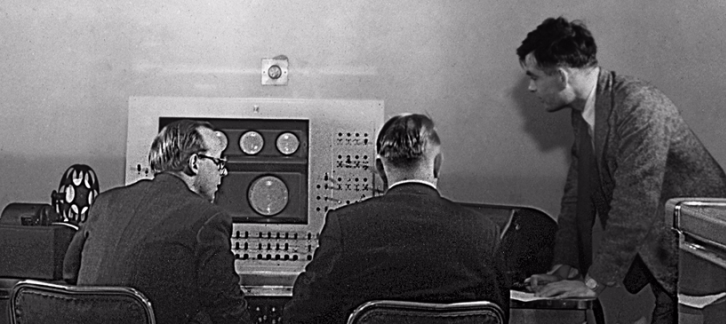Here’s what ‘Jingle Bells’ sounds like sung by a seriously retro computer

If you’ve ever wondered what Jingle Bells would sound like through a 1950s era computer then wonder no more as a pair of boffins have done exactly that.
Composer Jason Long and director of the Turing Archive Jack Copeland have worked to recreate two Christmas carols played by the Ferranti Mark I computer that stood in Alan Turing’s Computing Machine Laboratory in Manchester and was the first commercially available general-purpose electronic computer.
In December 1951 a BBC Radio broadcast used the computer to play a suite of songs, providing listeners with a sound they hadn’t heard before. However, only three songs were recorded: God Save the King, Baa Baa Black Sheep, and In the Mood. The computer’s renditions of Jingle Bells and Good King Wenceslas weren’t recorded and seemed lost to history.
But by deconstructing the only copy of the recording, believed to be the earliest surviving recording of computer-generated music, Long and Copeland were able to find 152 individual notes the ancient computer had constructed.
From there they were able to recreate the sounds needed to form the missing Christmas tunes, with a little filling in of missing notes with new sounds based on calculating the closest frequencies to what the Ferranti Mark 1 could produce.
The process appears to have been pretty painstaking in order to get the right sounds.
“We had to re-score each carol to fit the computer’s needs, especially in terms of key and complexity; and our scores mirrored the three reference pieces in length and tempo. Then we selected notes from the palette and pieced them together to fit the scores,” Long and Copeland explained.
“Some handcrafting was required to create a realistic performance. For instance, a fake-sounding “machine gun effect” was liable to set in if the score required the same note to be repeated several times, so we achieved a natural sound by piecing together different specimens of the same note, taken from different places in the restored recording.”
The end result are harsh renditions of Christmas classics, but showcase how a bit of work can bring back sounds from a computer that was dismantled more than half a century ago.
It also serves as a good example of how far computer-generated music has come over the years and potentially how far it will go over the course of the next 50 years.
Related: Best music streaming service
Are there any nuggets of computing history you’d like to see resurrected? Have your say on Twitter or Facebook.

